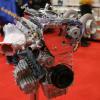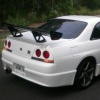Track Car Help
Announcements
-
Similar Content
-
Latest Posts
-
Knowing how slow their other compressors are that connect to the cars battery, you'd want to hope it's one hell of a slow leak!
-
So why can’t the front pipe just be listed as custom make? why does everything have to have a brand name to it? or if you have bought the car like this and have no idea about anything at all or no knowledge what so ever of parts how are you supposed to inform them of what it is you have exactly?
-
By soviet_merlin · Posted
Yep, I'd be interested to hear how it works out in the end. -
Because all parts that are put into your papers usually are assigned a badging if they did not come with one. So other people can just check that badging to tell if it is the parts your papes outline. But my pipe has NOTHING on it whatsoever. No idea why this even passed as a Mines pipe to begin with. I see this going two ways: -nobody cares and it's a non-issue, but that is unlikely -the pipe will just have to be assigned a bagding, for sake of argument, a Mines logo, and the papers corrected accordingly If it interests you I will post what the actual solution ended up being. All I care about is that it has to sound equal length and nobody can screw me later on because of a pipe being illegal.
-
The fasteners to the pipe are not subject to TÜV I guess, if we really start putting nuts and bolts through technical tests I'm going to hang the people responsible and then myself. Usually on a modern-ish EU normed car, you would just replace the pipe. Because if you start hacking away at it and welding new pieces on the cops will definitely find a reason to tow your car. That is just how it is sadly. On old cars and imports with no clear "standard" stuff like that won't matter too much. Most cops or inspectors probably won't even really know what they are looking at. But there is experts for this stuff even among cops, and some of them know the rules to a T and even have extensive knowledge about many vehicles. For "just a pipe" to be legal it usually is included in a set of parts, like a complete intake kit or a full exhaust. For example my exhaust needs to pass a noise test, meaning they have a standardized test track with a set of instructions and they run the car through there 3x for an average noise value that is 75dB(a) at point x of the test track. If it's above that, fail. For a turbo setup to be put in your papers you have to do dyno runs, emissions testing etc. So quite costly
-









Recommended Posts
Create an account or sign in to comment
You need to be a member in order to leave a comment
Create an account
Sign up for a new account in our community. It's easy!
Register a new accountSign in
Already have an account? Sign in here.
Sign In Now